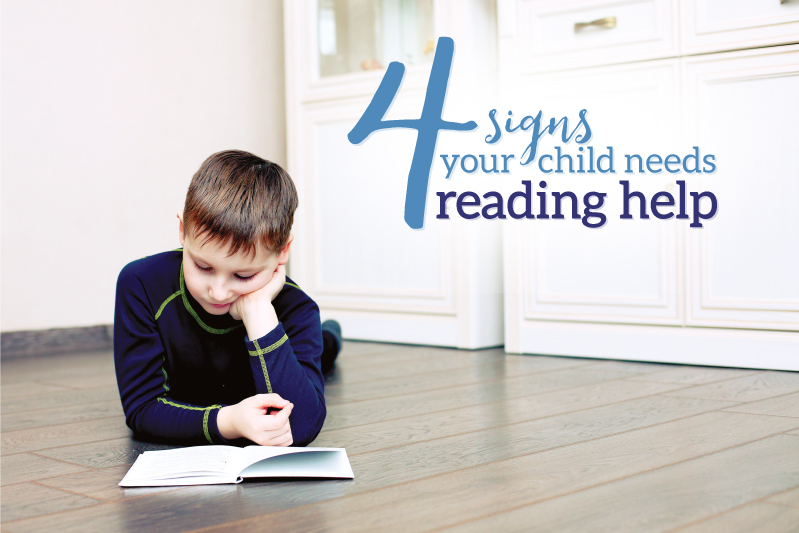
It is only natural for parents to wonder how their child’s reading stacks up next to peers. This is especially the case when there is an older sibling or friend in the picture who seemed to breeze through the process. It is not always clear whether a child has a weakness that needs to be helped, or if reading simply hasn’t “clicked” for them yet.
Students might avoid reading, or say they “are bad” at it, or even that they dislike it. While these concerns could be related to a real reading difficulty, there are specific reading behaviors that every parent can look out for. Check out the following 4 signs that a student needs reading help.
Not sure about one? During homework tonight, have your child read grade-level text aloud to you.
1. Sounding out words is difficult
Some students have difficulty sounding out new words—even those words that “play fair.” They might add or omit sounds or syllables, or read sounds out of order; for example, they might read the word stream as “steam,” or read grater as “garter” or “grate.”
2. Difficulty learning and retaining sight words
Many common words, like eye and thought “don’t play fair,” so recognizing them is the only way to read them. And, because they are common, these words should be recognized quickly, leading to fluent paragraph reading. A student who has difficulty may attempt to sound out common words that they have already learned, reading people as “pee/oh/plee,” for example. Students may also do a lot of guessing (e.g. reading people as “purple”).
3. Slow and laborious passage reading
Some students may be able to sound out words but they are not able to put it all together on the page. These readers can get mired down in sounding out every word, though they may not recognize the same word when they encounter it in the next paragraph.
Slow decoding also interferes with reading comprehension; by the time they get to the end of a passage, they have lost the big picture or meaning. This can be especially frustrating for students who are curious and love learning.
4. Poor spelling
Some students have difficulty identifying all of the needed phonemes (optnrty for opportunity); and some students can spell phonetically but cannot retain spelling patterns (opertunity for opportunity).
Reading Help at Lindamood-Bell
For many students, a cause of reading difficulties is weak symbol imagery—the ability to visualize letters in your mind’s eye. This connection of imagery and language is necessary for sounding out new words, as well as quickly recognizing letters and common words. Students who read fluently, and are able to self-correct their errors, have strong symbol imagery. Learn more about symbol imagery and solutions for reading difficulties here.
A child who seems to have trouble reading could be behind, or may, in fact, be developmentally on-target for their age and grade. Regardless, if you are seeing signs of a reading difficulty, you need to find out why. A learning ability evaluation uncovers the strengths and weaknesses that affect learning. While some students come to us with a previous diagnosis, such as dyslexia, many seek our help to enhance their skills or to just make learning easier—and we do.
Contact us to discuss your child’s reading and for information about our Learning Ability Evaluation, the first step in teaching students to read to their potential: 800-300-1818.





